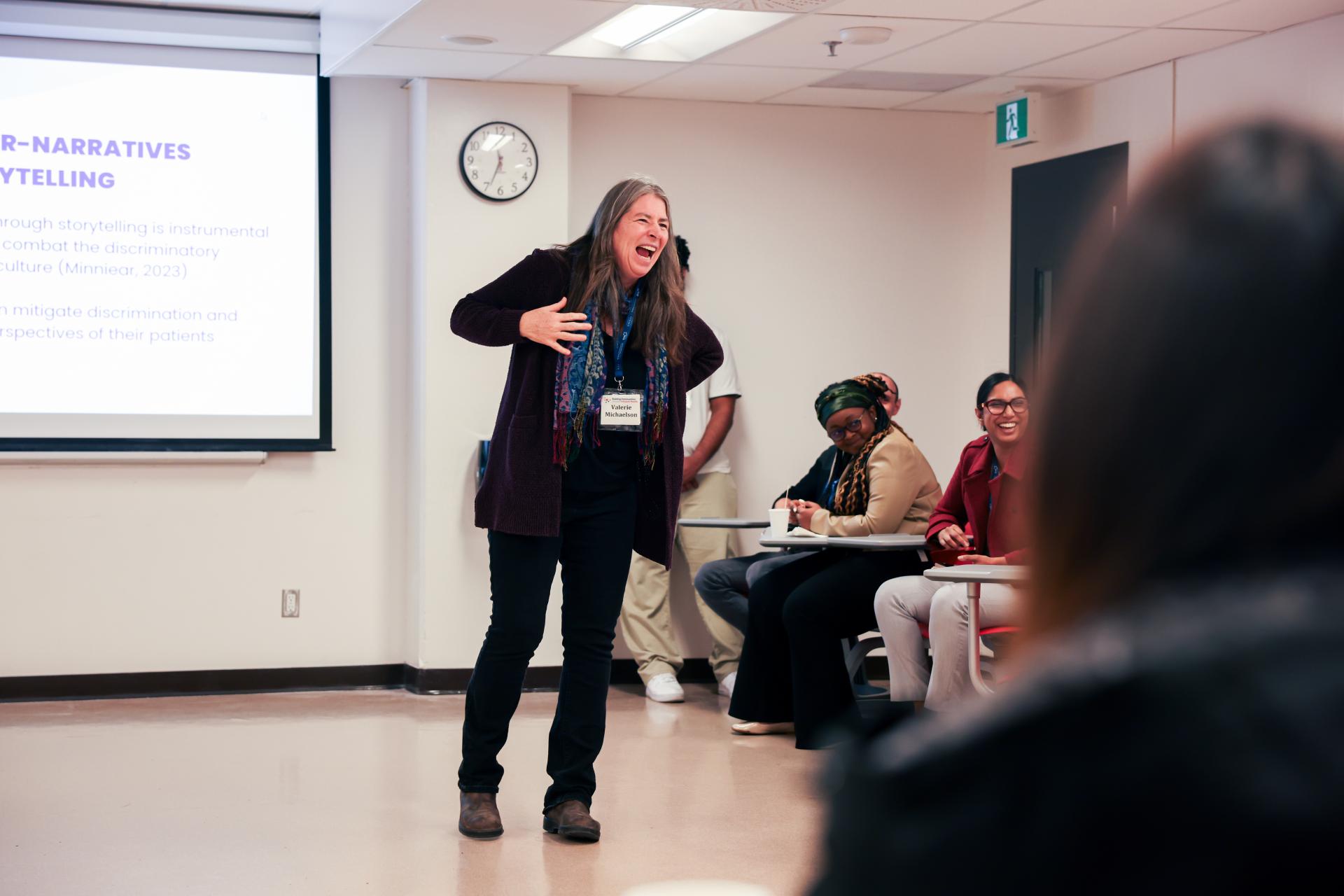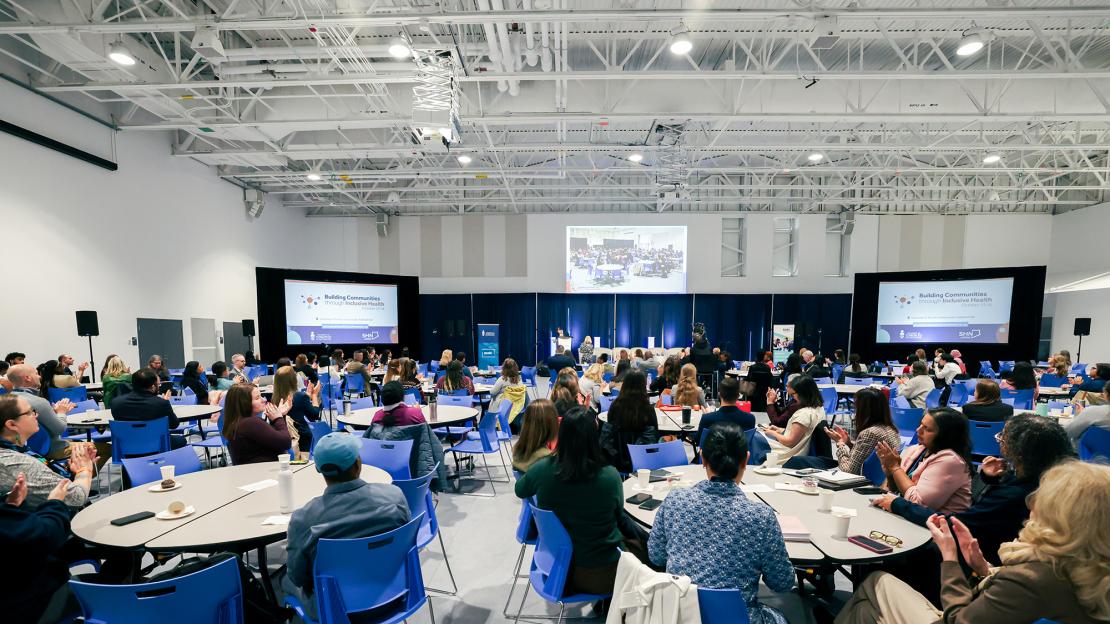Scarborough is much like a microcosm of Canada — a heavily multicultural population facing rising barriers to health care. That means the massive push to transform the region’s health-care system could create a model for communities across the country.
“We have a unique opportunity with existing and emerging health actors,” says Irena Creed, vice-principal, research and innovation at U of T Scarborough and co-chair of a recent conference that brought together leaders working in health care across the eastern GTA.
“As we build a new medical academy, two new health research institutes — one in a hospital and the other at U of T — and a health district with universities, hospitals and other health providers, and community organizations, we will work together to reduce if not eliminate health inequities within the region.”
Almost 60 per cent of Scarborough residents were born outside Canada and eight of its neighbourhoods are designated as facing the highest levels of inequity in Toronto. The issues plaguing Canadian health care are also concentrated in the east end. About 15 per cent of residents don’t have a primary care provider and are in the lowest income bracket. That’s the second lowest number of family physicians per capita in Ontario, and a big part of why emergency departments at its three hospitals operate at more than 200 per cent of intended capacity.
Many believe the path to a better system begins with an intersection of researchers, community members and health-care workers. Hundreds of them gathered at a conference, dubbed Building Communities through Inclusive Health and hosted by U of T Scarborough and Scarborough Health Network (SHN), two institutions working to galvanize, connect and support the people fighting to revitalize the system.

“Bringing these groups together is essential. The academic lens of equity can be different than that of a practitioner, which may be different from the view from the community where there may be many determinants before one even accesses health resources,” says Dr. Samir Grover, associate professor in gastroenterology in the department of medicine at U of T and incoming executive vice president of education at SHN. “Having different perspectives allows academics to create impactful research; for example, evaluating whether an intervention based around equity can tangibly make a difference on hard health outcomes.”
People from across the eastern GTA presented their creative approaches to bridging inequity — researchers and nurses are having health-care workers tackle their discriminatory views by participating in theatre; physicians are prescribing time in nature to boost health; community leaders are teaching people to change body language as a means of preventative medicine.
“Often we give space to others without giving them power. We need to share that power,” says Dr. Adriana Carvalhal, scientific director of the SHN Research Institute and associate professor in the department of psychiatry at U of T. “It’s very clear for us as clinicians and researchers that often we’re trying to find a solution that leaders in the community have already found.”
By collaborating with clinicians and community members, researchers can also track when data is used to create programs or policies, then measure their impact to show people that sharing their data is safe and impactful.
“There’s a theme coming out that people feel very heartbroken by the system and that all of this work in relation to welfare has to be grounded in trust,” says Cormac Russell, speaker and author of The Connected Community: Discovering the Health, Wealth, and Power of Neighborhoods. “There’s been a strong sense that there’s no stories without data and no data without stories.”
.jpg)
And U of T Scarborough’s upcoming medical academy, the Scarborough Academy of Medicine and Integrated Health (SAMIH), is expected to have a major impact on the region. Scheduled to open in September of 2025, at full capacity it will graduate 44 physicians, 56 physician assistants, 30 nurse practitioners, 40 physical therapists and 300 life sciences students every year.
The conference was designed to act as a launchpad, partly through workshops that had participants brainstorm practical next steps to equity gaps and barriers.
“We are building a community of advocates, scientists and health individuals that may not have interacted before,” says Prof. Charles Trick, interim director at the Institute for Inclusive Health and Well-being, an institutional strategic initiative at U of T Scarborough that boosts inclusive and integrative health research programs.
“The institute will then seek out an opportunity for this community to help Scarborough become an epicentre where people gather to innovate to make health-care systems equitable, not only in Scarborough but across Canada.”
